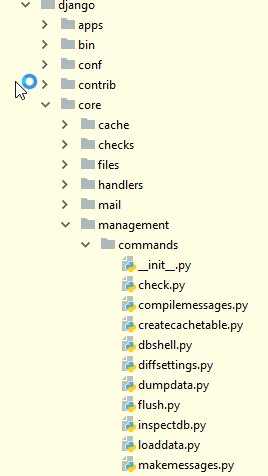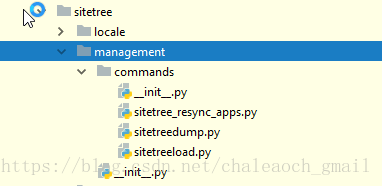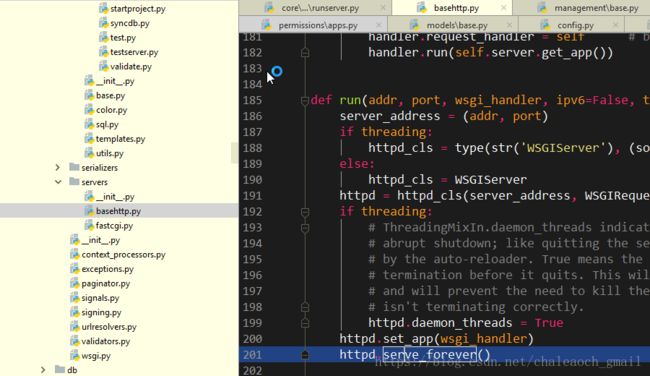django加载及启动WSGI服务
- django加载及启动WSGI服务
- 入口
- 加载settings
- 加载app和app中的models
- 运行
- 题外话
- 正文
django加载及启动WSGI服务
版本 – 1.8.18
VERSION = (1, 8, 18, 'final', 0)
入口
from django.core.management import execute_from_command_line
execute_from_command_line(sys.argv)utility.execute()
加载settings
try:
settings.INSTALLED_APPS #这里实际上真正想执行的是LazySettings中的_setup
except ImproperlyConfigured as exc:
# 如果django没有设置
# ENVIRONMENT_VARIABLE = "DJANGO_SETTINGS_MODULE"
# 会触发异常跳到这里
self.settings_exception = exc
# A handful of built-in management commands work without settings.
# Load the default settings -- where INSTALLED_APPS is empty.
if subcommand in no_settings_commands:
settings.configure() # configure也处理了settings.py这里应该是django留了一个钩子给用户定制的self._wrapped = Settings(settings_module)
self.wrapped就成了settings.py的包装。之后查询settings中的配置,只能从self.wrapped去查询了。
到此settings加载完毕 – 不过我没想明白为什么要费这么大劲去解析settings.py
加载app和app中的models
接着往下运行.
if settings.configured:
# Start the auto-reloading dev server even if the code is broken.
# The hardcoded condition is a code smell but we can't rely on a
# flag on the command class because we haven't located it yet.
if subcommand == 'runserver' and '--noreload' not in self.argv:
try:
autoreload.check_errors(django.setup)()
except Exception:
# The exception will be raised later in the child process
# started by the autoreloader. Pretend it didn't happen by
# loading an empty list of applications.
apps.all_models = defaultdict(OrderedDict)
apps.app_configs = OrderedDict()
apps.apps_ready = apps.models_ready = apps.ready = True
# In all other cases, django.setup() is required to succeed.
else:
django.setup()这里的check_errors是一个装饰器(或者说闭包也行),实际运行的仍然是django.setup().
app.populate()很重要
# django/__init__.py
def setup():
"""
Configure the settings (this happens as a side effect of accessing the
first setting), configure logging and populate the app registry.
"""
from django.apps import apps
from django.conf import settings
from django.utils.log import configure_logging
configure_logging(settings.LOGGING_CONFIG, settings.LOGGING)
apps.populate(settings.INSTALLED_APPS)create方法中
module = import_module(entry)导入module
这里导入model
# django/apps/config.py
@classmethod
def create(cls, entry):
"""
Factory that creates an app config from an entry in INSTALLED_APPS.
"""
try:
# If import_module succeeds, entry is a path to an app module,
# which may specify an app config class with default_app_config.
# Otherwise, entry is a path to an app config class or an error.
module = import_module(entry)app和app中的models导入完毕.
运行
真正干活的地方.
题外话
无意间发现django command都在这里 :)
django会遍历每个应用下面的management/commands.



正文
django的command模块代码量有点多…,来不及拆解.
结论在这儿
